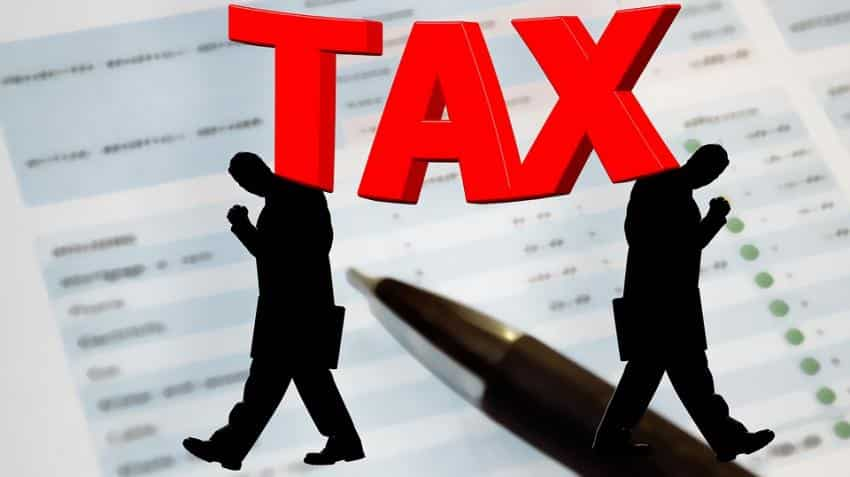Income tax filing: 9 changes that came into effect from April 1
Now every person will be asked to quote his Aadhaar details while filing taxes starting July 1st.

With the new financial year came the new rules to file income tax returns!
After announcing sea of changes in the last fiscal, it is now time to implement them. The process to file tax return has been started from April 1 and many taxpayers are already looking for the documents.
Before you start your here is a look of changes which have come into effect in the new financial year. Speaking with Zeebiz, Chetan Chandak, Head of Tax Research, H&R Block India shared the changes you need to keep in mind while filing the income tax.
ALSO READ: CBDT simplifies ITR filing process from FY18
Aadhaar must for filing ITR & applying for PAN
Now every person will be asked to quote his Aadhaar details while filing taxes starting July 1st. Aadhaar will be mandatory for PAN applications as well. Existing PAN holders will be asked to link their PAN with their Aadhaar before a date to be notified. If any person does not possess the Aadhaar Number but he had applied for the Aadhaar card then he can quote Enrolment ID of Aadhaar application Form in the ITR.
Simplified tax return
This is a significant step taken by the government to simplify tax filing for a large portion of taxpayers. In the next Assessment Year, salaried taxpayers with income up to Rs. 50 lakh & rental income from one house property only can use this simplified form to file their Income Tax Return.
ALSO READ: Income Tax Filing: What is Sahaj? Here's all you need to know about new ITR-1 Form
Cash Deposits during Demonetisation
The taxpayers are now required to provide the details of aggregate cash deposited in excess of Rs. 2 lakh into all their bank accounts (including loan account/ credit card account) in the new ITR forms.
ALSO READ: ITR-1 Form: Disclose information on Rs 2 lakh cash deposit or pay 77% penalty
Income taxable at special rates
Unexplained income: As per Section 115BBE any unexplained credit or investment attracts tax at 60% (plus surcharge and cess, as applicable), irrespective of the slab of income. Now new columns have been inserted in ITR Forms 2, 3, 5, 6, 7 under 'Schedule OS' to report such unexplained income under 'Schedule SI'. It may be noted that any taxpayer having unexplained income cannot opt for ITR-1 Sahaj.
Dividend above Rs 10 lakhs
As per Section 115BBDA the dividend received from domestic company is taxable at rate of 10% if aggregate amount of such dividend exceeds Rs.10 lakh for the year. New column has been inserted in ITR Forms to declare such dividend income in 'Schedule OS'. It may be noted that any taxpayer having dividend income above Rs 10 lakhs and covered under Section 115BBDA cannot opt for 'ITR-1 Sahaj'.
Deduction under section 80EE
Section 80EE allows deduction on home loan interest for first time home buyers. This deduction is over and above the Rs 2 lakhs limit covered under Section 24(b). A new field has been provided in new ITR Form 2, 3, 4 under Schedule VI-A deductions to claim home loan interest under Section 80EE.
ALSO READ: 10 things you need to keep in mind while making your tax declarations
Declaration of value of assets and liabilities by Individuals/HUF earning above Rs 50 lakhs
During 2016, the Govt. had introduced new Schedule requiring individuals/HUFs to declare the value of assets and liabilities if their total income exceeds Rs. 50 lakhs. Taxpayers were required to mention cost of immovable property, jewellery, bullion, vehicles, shares, bank and cash balance, etc.
Now tax payers are also required to discloseaddress of immovable property and description of movable assets in new ITR Forms. Further, new fields have been introduced in ITR Forms for disclosure of 'Interest held in the assets of a firm or AOP as a partner or member'. Such members/partners are also required to disclose name, address, PAN of the firm or AOP.
Details of receipts as mentioned in Form 26AS under TDS schedule
ITR 4 which is now applicable for taxpayer opting for presumptive taxation scheme has a new column under the 'Schedule TDS2' to show the receipts as mentioned in Form 26AS.
ALSO READ: First time filing income tax? Here's all you need to know about Form 16 and Form 26AS
Segregation of digital receipts and other receipts under presumptive taxation scheme
As per the presumptive taxation scheme under Section 44AD, 8% of gross receipts or turnover will be deemed as income of the taxpayer. However, in 2017 Union Budget such limit has been proposed to be reduced to 6% for digital receipts of taxpayer.
In new ITR form, new columns have been inserted to show turnover received through digital mode. Consequently, columns have been inserted to show presumptive income at 6% and 8%.
The Finance Act 2016, had introduced the presumptive taxation scheme for professionals as well. Now new ITR 4 Form shows an option to avail such presumptive taxation scheme for professionals under Section 44ADA.
Get Latest Business News, Stock Market Updates and Videos; Check your tax outgo through Income Tax Calculator and save money through our Personal Finance coverage. Check Business Breaking News Live on Zee Business Twitter and Facebook. Subscribe on YouTube.
RECOMMENDED STORIES

Retirement Planning: SIP+SWP combination; Rs 15,000 monthly SIP for 25 years and then Rs 1,52,000 monthly income for 30 years

Top Gold ETF vs Top Large Cap Mutual Fund 10-year Return Calculator: Which has given higher return on Rs 11 lakh investment; see calculations

Retirement Calculator: 40 years of age, Rs 50,000 monthly expenses; what should be retirement corpus and monthly investment

SBI 444-day FD vs Union Bank of India 333-day FD: Know maturity amount on Rs 4 lakh and Rs 8 lakh investments for general and senior citizens

EPF vs SIP vs PPF Calculator: Rs 12,000 monthly investment for 30 years; which can create highest retirement corpus

Home loan EMI vs Mutual Fund SIP Calculator: Rs 70 lakh home loan EMI for 20 years or SIP equal to EMI for 10 years; which can be easier route to buy home; know maths
07:38 PM IST










 Yet to e-verify your ITR? Don't miss today's deadline, or else you have to pay this much penalty; know how to e-verify ITR
Yet to e-verify your ITR? Don't miss today's deadline, or else you have to pay this much penalty; know how to e-verify ITR ITR filing season: Pay zero tax on Rs 10 lakh annual income; know calculations here
ITR filing season: Pay zero tax on Rs 10 lakh annual income; know calculations here Income Tax Season: I-T department issues 7 types of forms; do you know which form you need to fill? Know here
Income Tax Season: I-T department issues 7 types of forms; do you know which form you need to fill? Know here Income Tax Season: How to file ITR for rental property income | A step-by-step guide
Income Tax Season: How to file ITR for rental property income | A step-by-step guide